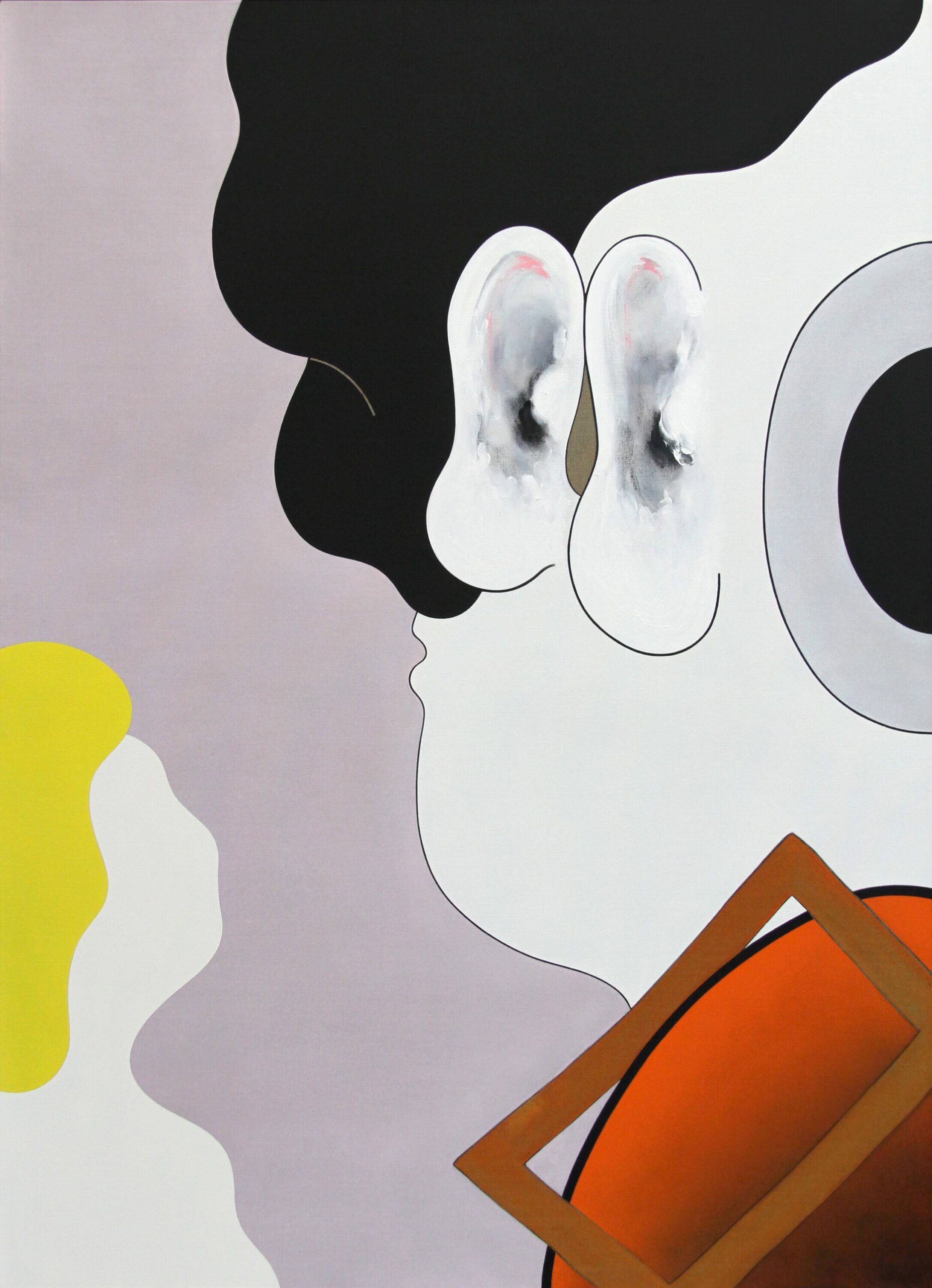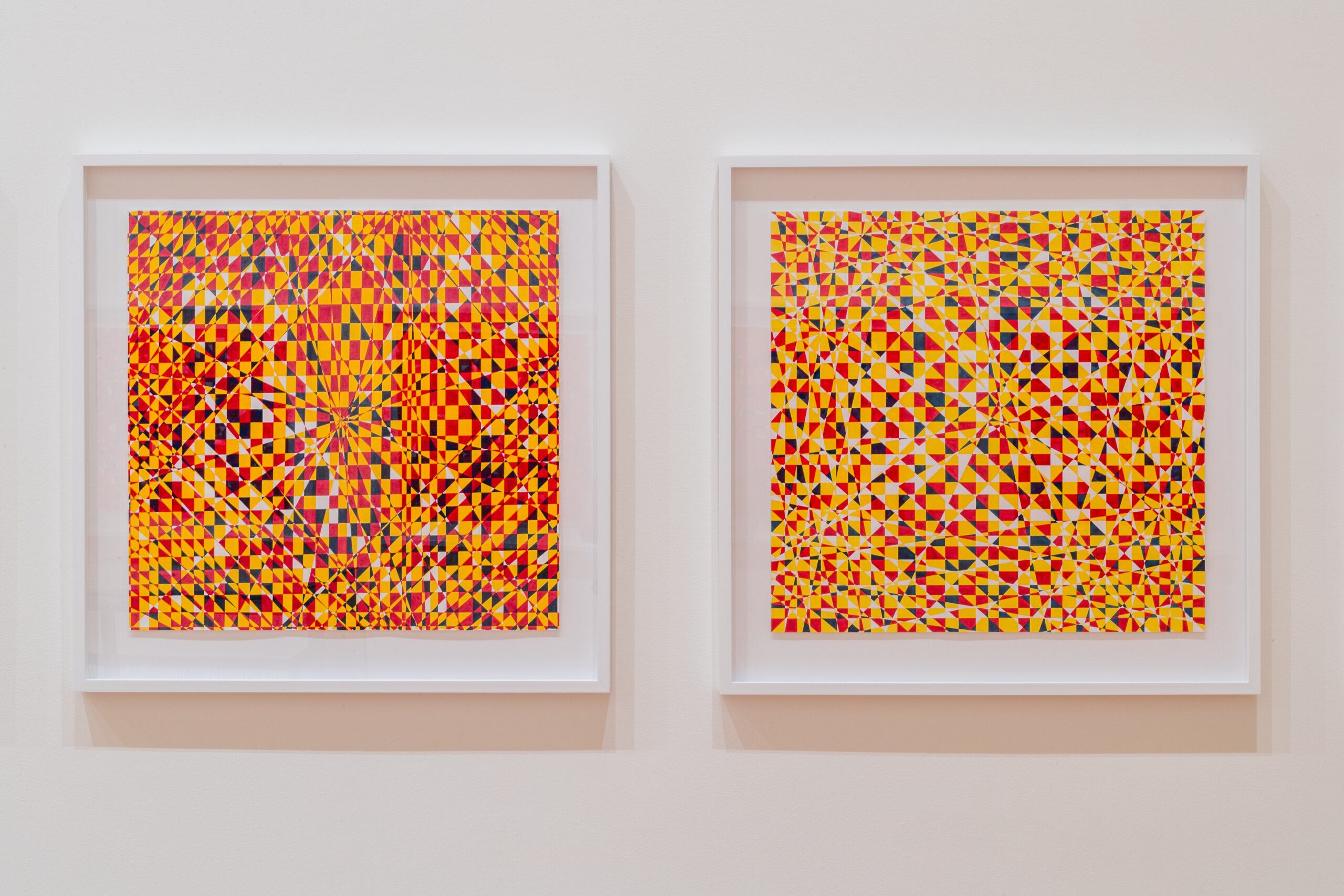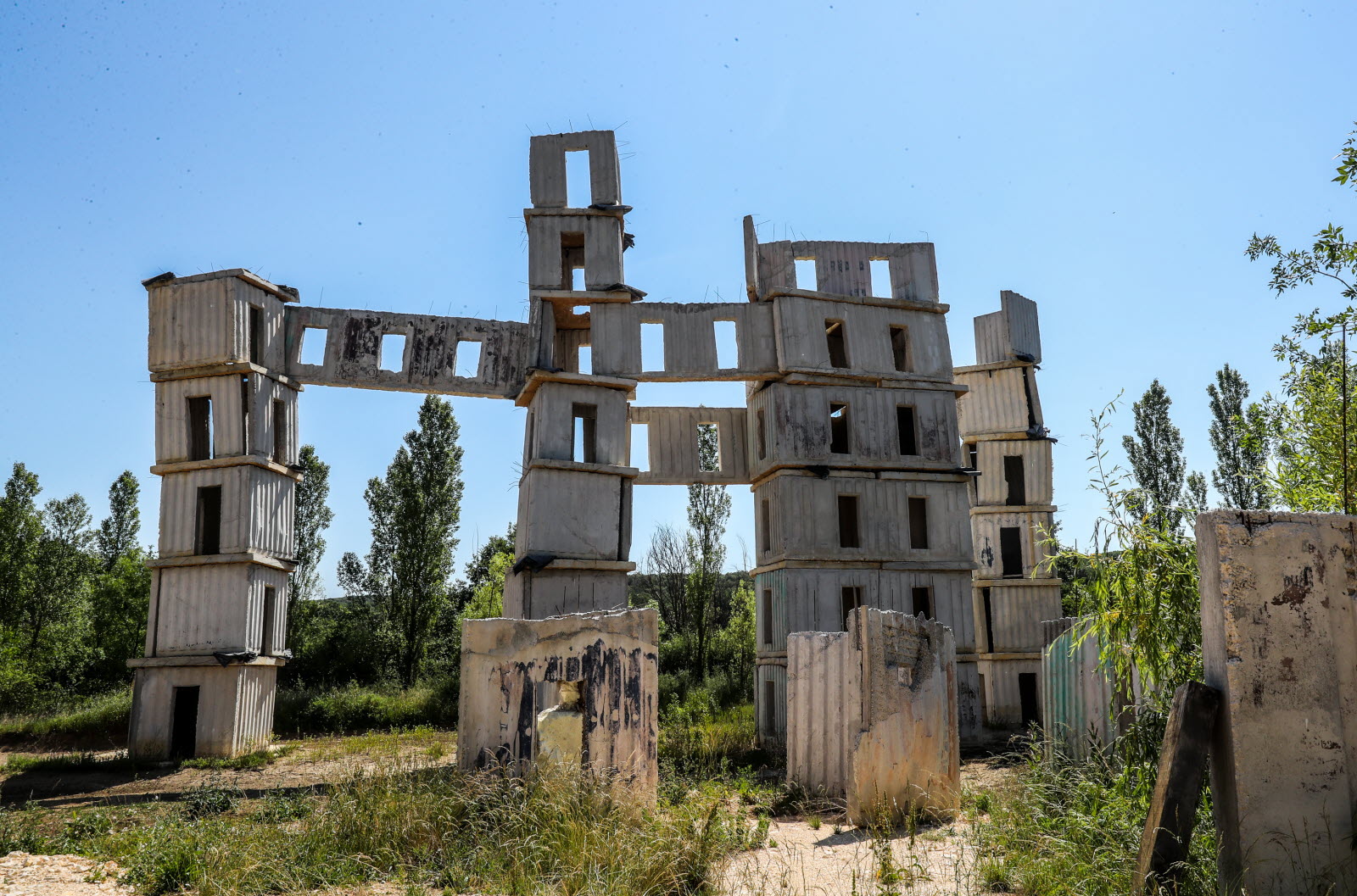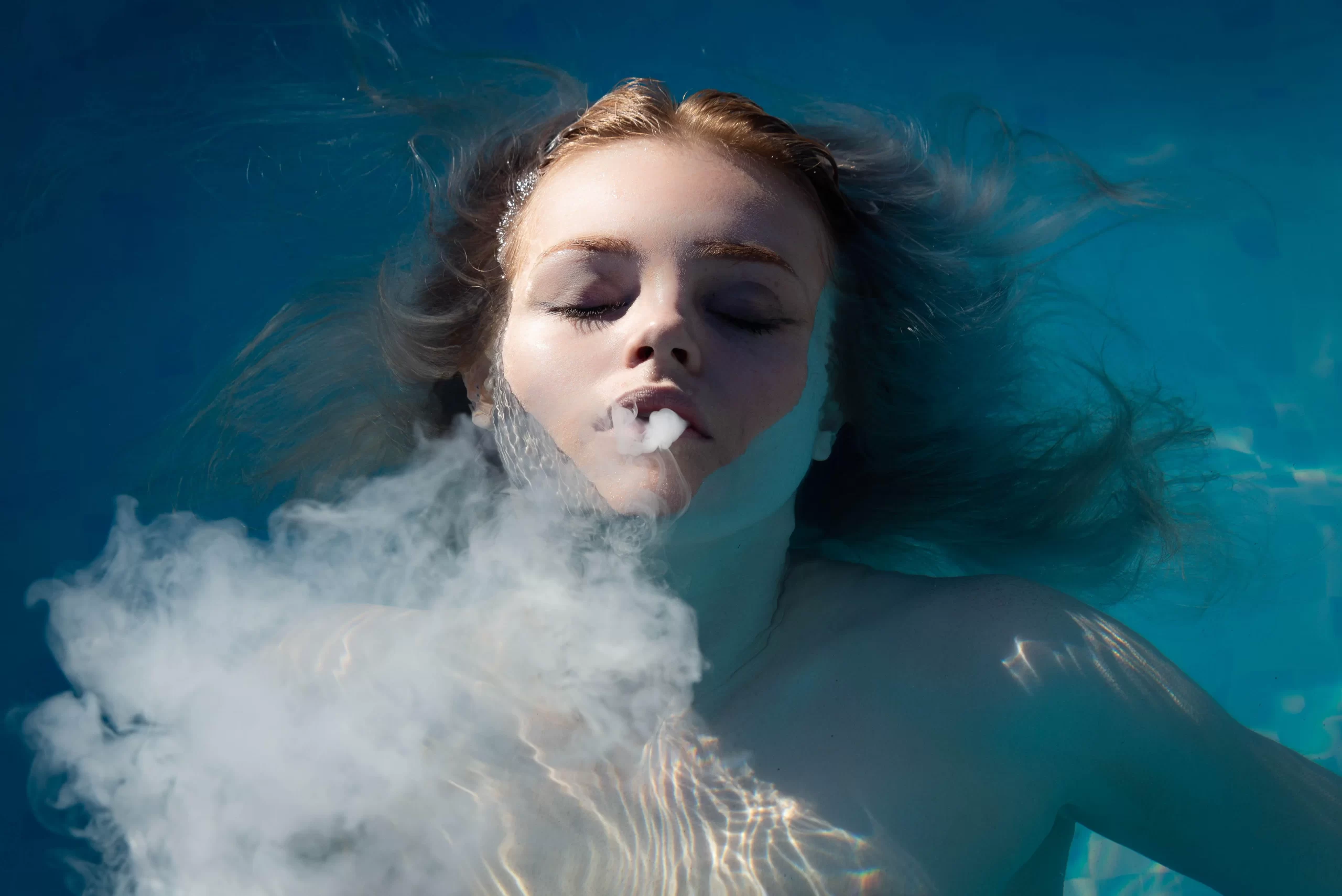Here, no. 20, 2023.
—
It’s 1975. Brent Harris—just nineteen—is transfixed before a Colin McCahon painting, The Family (1947). It’s hanging in Manawatu Art Gallery, in Harris’s hometown, Palmerston North. In the painting, a man looks towards a woman; she looks the other way. They are estranged, disconnected. She’s suckling a baby; its needy face disappearing into her breast. The man’s and the baby’s faces are foreshortened, featureless—they rhyme. The trio appear homeless—like refugees—in a cold, unforgiving landscape. Does this miserable painting refer to the Holy Family, to some ur-family, to McCahon’s own family, or all the above? The grim scene spoke to Harris, who was beginning to process his own family issues—a monstrous father.
In 1975, Harris also got married, but he didn’t take to the life. Three years later, he’d left his wife, escaped to Auckland, and come out. ‘She was talking about babies, so I ran off’, he confesses. ‘In Auckland, I met a range of gay men who opened up a different cultural life for me, something not available to me in the Palmerston North of that time.’ Harris did art courses at Outreach on Ponsonby Road. In 1981, he crossed the ditch to follow a lover. The next year, he enrolled at Melbourne’s Victorian College of the Arts. As he studied, AIDS loomed large in his community. ‘I was a mess’, he says. ‘There were two castrating influences in my life: my father, then AIDS.’
The virus would inform his work. In 1989, he unveiled his fourteen-painting cycle The Stations of the Cross to critical and commercial acclaim. A classic subject in Catholic art, the Stations prompt us to meditate on the passage of Christ’s passion, crucifixion, and death. For Harris, it was a readymade AIDS narrative. ‘Christ was only thirty-three. If you’re an old person going to your death, you’re probably not fighting so much’, Harris says. ‘But Christ falls three times and each time his ego is reduced a bit more. I saw that, watching my young friends die. And station five is “Simon helps Jesus to carry the cross”. Well, we all carry the burden of each other’s death and we certainly did then.’
The Stations had been explored by American abstract expressionist Barnett Newman in the late 1950s and 1960s, and by McCahon in the 1960s and 1970s. Harris riffed off both. He represented the journey in a series of large canvases, where black-and-white geometric elements—with nods to Newman, McCahon, Malevich, and others—emblematised each step. It was a time of postmodern irony, and Harris played on the tension between his work’s heavy themes and cool quotation.
In the early 1990s, Harris veered away from abstraction. ‘I’d been working on these charcoal drawings of dots, very abstract, very minimal, when this stupid elephant trunk appeared.’ He went with the rude irruption, titling the resulting paintings Appalling Moment. He says, ‘At that moment, things opened up. The body entered in a more playful, sometimes threatening way. Abstract forms suggested body parts, penis, scrotum, breast, anus.’ The work became figurative, but hardly realistic.
Harris may have been estranged from his parents, but they haunted his art. Between 2001 and 2009, Harris developed his epic twenty-six painting Grotesquerie series, exorcising his demons. These psychodrama scenes are full of figure-ground games and duck-rabbit problems. They star a devilish, horned father and a faceless, fleshy mother, whose coiffure suggests a hidden face—the father, perhaps. In one work, the father devolves into silhouettes of stylised children turning away from him and each other. However, the negative space between them suggests a contradictory figure, whose needy arms are outstretched towards the father. In some images, the negative space around the mother’s body suggests a suckling mouth. In one, the father seems to suck on a penis-like protrusion from a limbless, headless body, whose bumps suggest both breasts and testes. Father and mother, male and female, balls and breasts, penis and nipple get royally scrambled in this primal-scene confusion.
Despite the psychological mayhem so cooly represented in his art, Harris’s home life is rather stable, even routine. He’s been with his partner, Andrew Browne, another successful painter, for twenty-three years. They are fixtures on the Melbourne scene. ‘We both got into Gertrude Street in 1987’, Harris says. ‘Andrew was with a girl then. We got together thirteen years later, in 2000. Now, we eat together, sleep together, work together. In Melbourne, we both show at Tolarno.’ About twelve years ago, they bought a studio together, near their house in Fitzroy. Browne spotted the two-storey commercial space. ‘We’ve got about 120 square metres each. I’m upstairs. I get a bit more light than Andrew.’
In Harris’s works, forms reiterate and morph to generate suggestive scenarios, but they also leave space for us to project ourselves into them. ‘I make weird twists and turns, but my collectors continue to engage’, he says.
His works are complex. First, there’s a soul-searching aspect. Harris uses automatic drawing to conjure up images from his psyche, like finding faces in the fire. ‘I would take two or three of my monoprints to my shrink and we’d chew them over’, he recalls.
Second, as his motifs migrate from the drawings, small studies, and monoprints into the big refined paintings and prints, they become slick, graphic, pop. A nagging emotional disconnect between subject and treatment emerges, harking back to McCahon in the late 1940s, rendering trauma in the jaunty language of comics.
Third, there’s a self-conscious but restless riffing on art history. Goya, Munch, McCahon, and Bourgeois are compass points.
In 2016, Harris’s father died and finally he felt able to return to New Zealand, to reconnect. In 2018, he had his first show with Wellington’s Robert Heald Gallery. That year, he also gave a large selection of his prints to Christchurch Art Gallery. Harris has always been a prolific printmaker, owing to the early encouragement of James Mollison, the legendary inaugural director of the National Gallery of Australia. ‘James made the point that institutions can easily hold works on paper spanning an artist’s career and that I should get on with printmaking.’ Harris held back examples of most of his prints to give to a New Zealand museum one day. In 2019, Christchurch mounted Towards the Swamp, showing the prints and a recently acquired painting.
Harris’s relationship with Heald has proven solid. He’s had three stunning solo shows with Heald in the capital, plus a memorable two hander with Susan King at Heald’s booth at the 2018 Auckland Art Fair. In 2022, Harris unveiled a second series of Stations at Heald. They are so different. Where the first set is black-and-white, the second is fleshy pink. Where the first is abstract, the second is figurative, even illustrative, looking back to McCahon’s earlier works of the late 1940s. ‘I worked on them during Covid, and it was the perfect isolated, inward kind of moment. I keep saying that I’m not religious, but I guess every religion is just trying to understand death.’
Harris’s repatriation campaign has now climaxed in a survey show, The Other Side at Auckland Art Gallery, which opened in May. The hero image is Listener (2018). Harris painted it after his father died. It riffs on those foreshortened faces from McCahon’s The Family. ‘It’s a self-portrait’, Harris explains. ‘It’s got two big ears together, my ears, replacing eyes. I’m waiting to hear something’—an apology?—’but it never comes.’ Harris’s deranged Picassoid self portrait also has a picture frame or painting stretcher—a cross? a chip?—on its shoulder, and a big cyclops eye. ‘My mother is down low in the corner. She’s mute, as my mother was. And now, the father’s face is forming in my hair’, he explains.
Australian audiences have watched Harris’s complex oeuvre gently unfold, chapter by chapter, but New Zealand audiences are coming up to speed with it all at once, so it’ll be interesting to see how The Other Side is received. Harris’s work may be new to us, only arriving on our doorstep now, but he’s an older artist, with his roots in the last century. Nevertheless, I expect a younger audience will gravitate to his work, partly because he’s not part of the inherited New Zealand art canon, at least not yet. Three of his paintings found their way into Mānawatia Takatāpui/Defending Plurality, curated by Shannon Novak at Tauranga Art Gallery in 2021. I asked Harris how he felt about being conscripted into a new queer moment. ‘I’m really not queer enough’, he replied. ‘I’m just a standard old homo.’
[IMAGE: Brent Harris Listener 2018]





